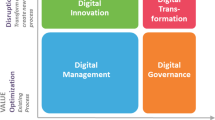Abstract
The Indiana University Advanced Research and Technology Institute (ARTI) is the technology transfer organ of the Indiana University system. ARTI’s structure is complex, and has been dynamic since its creation in 1996. This complexity stems in part from the diversity represented by the Indiana University system and from competing interests within the university itself. In addition to the intrinsic value of higher education, the university has the potential to add substantial value to Indiana’s economic landscape through technology transfer, economic development initiatives and the resulting job creation, but realizing that potential will require effectively leveraging a disconnected network including the IU campuses and critical capabilities contributed by the state’s other world class institutions. This paper reviews the formation of ARTI, a discussion of its structure and evolving mission, recent initiatives and some possible metrics for technology transfer initiatives.
Similar content being viewed by others
References
Blakely, E. and T. Bradshaw (eds.), 2002, Planning Local Economic Development: Theory and Practice, Thousand Oaks: Sage Publications.
Brand, M., 1996, ‘The Indiana University Advanced Research and Technology Institute,’ Presentation to the Indiana University Board of Trustees, March 26–27.
Brand, M., 1995, ‘Preface: The Strategic Direction Charter,’ www.iupui.edu/it/stratdir/sdcfinal.html.
speech.htm.
Economist, 1998, ‘The World as a Single Machine,’ June 18, www.economist.com.
Florida, R., 2002, The Rise of the Creative Class: And How It's Transforming Work, Leisure, Community and Everyday Life, New York: Basic Books.
Heylin, M., 2003, ‘2002 Starting Salary Survey,’ Chemical & Engineering News 81(14), 45-49.
Jacoby, M., 2003, ‘Entrepreneurial Science,’ Chemical & Engineering News 81(14), 37-38.
Link, A.N., 1999, ‘A Suggested Method for Assessing the Economic Impacts of University R&D: Including Identifying Roles for Technology Transfer Officers,’ The Journal of the Association of University Technology Managers 11, 6-9.
Long, M., 2002, ‘Annual Report for the Fiscal Year ending June 30, 2002,’ Indiana University Advanced Research and Technology Institute, www.arti.iu.edu.
Porter, M.E. and R.E. Wayland, 1995, ‘Global Competition and the Localization of Competitive Advantage,’ Advances in Strategic Management 11(A), 63-105.
Porter, M.E., 1990, ‘The Competitive Advantage of Nations,’ Harvard Business Review 68(2), 77.
Rubin, B. and M. Wilder, 1989, ‘Urban Enterprise Zones: Employment Impacts and Fiscal Incentives,’ Journal of the American Planning Association 55, 418-431.
Ship, S., 2003, ‘Delivering Societal Benefits: Outcomes from the U.S. Advanced Technology Program,’ Presentation to the BRIDGE program at the Indiana University School of Public and Environmental Affairs, April 21–25.
Wessner, C., 2003, ‘Public Policies to Create Science Based Economic Growth,’ Presentation to the BRIDGE program at the Indiana University School of Public and Environmental Affairs, April 21–25.
Author information
Authors and Affiliations
Rights and permissions
About this article
Cite this article
Jackson, S., Audretsch, D.B. The Indiana University Advanced Research and Technology Institute: A Case Study. The Journal of Technology Transfer 29, 119–124 (2004). https://doi.org/10.1023/B:JOTT.0000019534.32207.2c
Issue Date:
DOI: https://doi.org/10.1023/B:JOTT.0000019534.32207.2c




